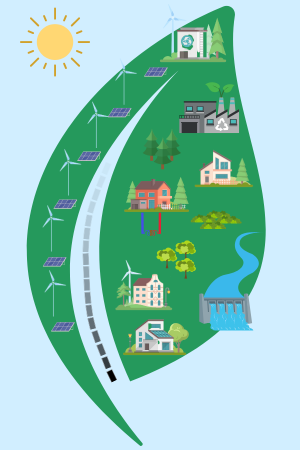
CAVITY WALL INSULATION
Save energy, save money
ENERGY COST
As energy costs escalate and the consequences of carbon emissions become more pronounced, it's essential to ensure that our homes are as energy-efficient as possible. One way to achieve this is through the implementation of cavity wall insulation.
CAVITY WALLS
Cavity walls, as the name suggests, consist of two 'skins' separated by a hollow space or 'cavity'. The cavity between the walls often acts as a conduit for heat transfer, making it harder to maintain a comfortable temperature within the home.
To insulate a cavity wall, a technician drills small holes into the wall's outer layer and blows insulation material into the cavity. The insulation material can be mineral wool, polystyrene beads, or polyurethane foam. The process is relatively quick, often completed within a few hours, with minimal disruption to the household. The holes are later filled and made good, leaving the home looking as it did before the procedure.
Cavity wall insulation provides a myriad of benefits. Firstly, it helps to reduce heat loss through the walls, contributing to a warmer home in winter. During the summer months, this insulation slows down the rate of heat entering the home, keeping it cooler. Overall, the process results in a more comfortable living environment, no matter the season.
The most tangible benefit for many is the significant energy savings. By minimizing heat loss, you reduce the need for excessive heating or cooling, resulting in decreased energy bills. The Energy Saving Trust estimates that installing cavity wall insulation could save around £115 to £225 per year on heating bills for an average-sized UK home, depending on the exact size and type of property.
Moreover, cavity wall insulation can help reduce condensation within the home if it's a problem on the internal walls. It does this by keeping the internal wall surface closer to room temperature and therefore less likely to condense moisture in the air.
Besides personal benefits, cavity wall insulation contributes positively to environmental sustainability. By reducing your energy consumption, you reduce the demand for fossil fuel burning, thus lowering your carbon footprint.
Get in touch today for a FREE quotation on your home.
Cavity wall insulation process
Preparation
Small holes are drilled around the property ready for the insulation to be pumped in.
Insulating
Mineral wool, polystyrene beads, or polyurethane foam is pumped into the cavity to provide insulation.
Making good
The holes are filled and made good and the house is left looking as good as before the works were completed.

